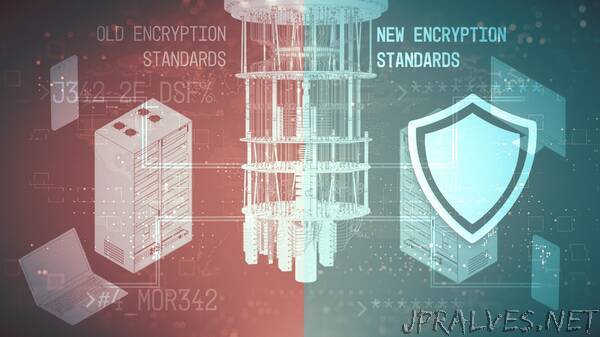
“Three new algorithms are expected to be ready for use in 2024. Others will follow.
Last year, the National Institute of Standards and Technology (NIST) selected four algorithms designed to withstand attack by quantum computers. Now the agency has begun the process of standardizing these algorithms — the final step before making these mathematical tools available so that organizations around the world can integrate them into their encryption infrastructure.
Today NIST released draft standards for three of the four algorithms it selected in 2022. A draft standard for FALCON, the fourth algorithm, will be released in about a year.
NIST is calling on the worldwide cryptographic community to provide feedback on the draft standards until Nov. 22, 2023.
“We’re getting close to the light at the end of the tunnel, where people will have standards they can use in practice,” said Dustin Moody, a NIST mathematician and leader of the project. “For the moment, we are requesting feedback on the drafts. Do we need to change anything, and have we missed anything?”
Sensitive electronic information, such as email and bank transfers, is currently protected using public-key encryption techniques, which are based on math problems a conventional computer cannot readily solve. Quantum computers are still in their infancy, but a sufficiently powerful one could solve these problems, defeating the encryption. The new standards, once completed, will provide the world with its first tools to protect sensitive information from this new kind of threat.
A Multiyear Evaluation Process
NIST’s effort to develop quantum-resistant algorithms began in 2016, when the agency called on the world’s cryptographic experts to submit candidate algorithms to NIST’s Post-Quantum Cryptography Standardization Project. Experts from dozens of countries submitted 69 eligible algorithms by the November 2017 deadline.
NIST then released the 69 candidate algorithms for experts to analyze, and to crack if they could. This process was open and transparent, and many of the world’s best cryptographers participated in multiple rounds of evaluation, which reduced the number of candidates.
Although quantum computers powerful enough to defeat current encryption algorithms do not yet exist, security experts say that it’s important to plan ahead, in part because it takes years to integrate new algorithms across all computer systems.
Each new publication is a draft Federal Information Processing Standard (FIPS) concerning one of the four algorithms NIST selected in July 2022:
CRYSTALS-Kyber, designed for general encryption purposes such as creating secure websites, is covered in FIPS 203.
CRYSTALS-Dilithium, designed to protect the digital signatures we use when signing documents remotely, is covered in FIPS 204.
SPHINCS+, also designed for digital signatures, is covered in FIPS 205.
FALCON, also designed for digital signatures, is slated to receive its own draft FIPS in 2024.
The publications provide details that will help users implement the algorithms in their own systems, such as a full technical specification of the algorithms and notes for effective implementation. Additional guidance will be forthcoming in companion publications, Moody said.
Additional Algorithm Standards
While these three will constitute the first group of post-quantum encryption standards NIST creates, they will not be the last.
In addition to the four algorithms NIST selected last year, the project team also selected a second set of algorithms for ongoing evaluation, intended to augment the first set. NIST will publish draft standards next year for any of these algorithms selected for standardization. These additional algorithms — likely one or two, Moody said — are designed for general encryption, but they are based on different math problems than CRYSTALS-Kyber, and they will offer alternative defense methods should one of the selected algorithms show a weakness in the future.
This need for backups was underscored last year when an algorithm that initially was a member of the second set proved vulnerable: Experts outside NIST cracked SIKE with a conventional computer. Moody said that the break was unusual only in that it came relatively late in the evaluation process. “It was mainly an indication that our process is working as it should,” he said.
The team members also want to make sure they have considered all the latest ideas for post-quantum cryptography, particularly for digital signatures. Two of the three post-quantum methods for digital signatures selected thus far are based on a single mathematical idea called structured lattices. Should any weaknesses in structured lattices emerge, it would be helpful to develop additional approaches that are based on other ideas. The NIST team recently requested submissions of additional signature algorithms that cryptographers have designed since the initial 2017 submission deadline, and the team plans to evaluate these submissions through a multi-round public program to be conducted over the next few years. The 40 submissions that met the acceptance criteria are posted here.
Eventually, the completed post-quantum encryption standards will replace three NIST cryptographic standards and guidelines that are the most vulnerable to quantum computers: FIPS 186-5, NIST SP 800-56A and NIST SP 800-56B.”
